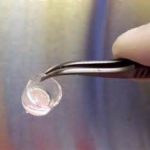The ocular irritation potential of formulations, products, ingredients, and chemicals can be evaluated using in vitro reconstructed human corneal epithelium (RhCE) models, such as the EpiOcular™ (MatTek Corp.) and SkinEthic HCE (EPISKIN) organotypic 3-D tissue constructs. Whether evaluating ultra-mild cosmetics and personal care products, or rank ordering the irritation potential of candidate formulations and ingredients, we can provide custom Ocular Screening protocols to best meet your testing goals.
The Ocular Screening protocols use a time-to-toxicity procedure to determine the test material exposure time that induces a 50% reduction in viability, relative to the negative control (ET50 or t50). This value can be used to evaluate the degree of irritancy of the test material (non/minimal, mild, moderate, severe/extreme).
For regulatory requirements or GHS classification needs, we recommend performing the Eye Irritation Test.

